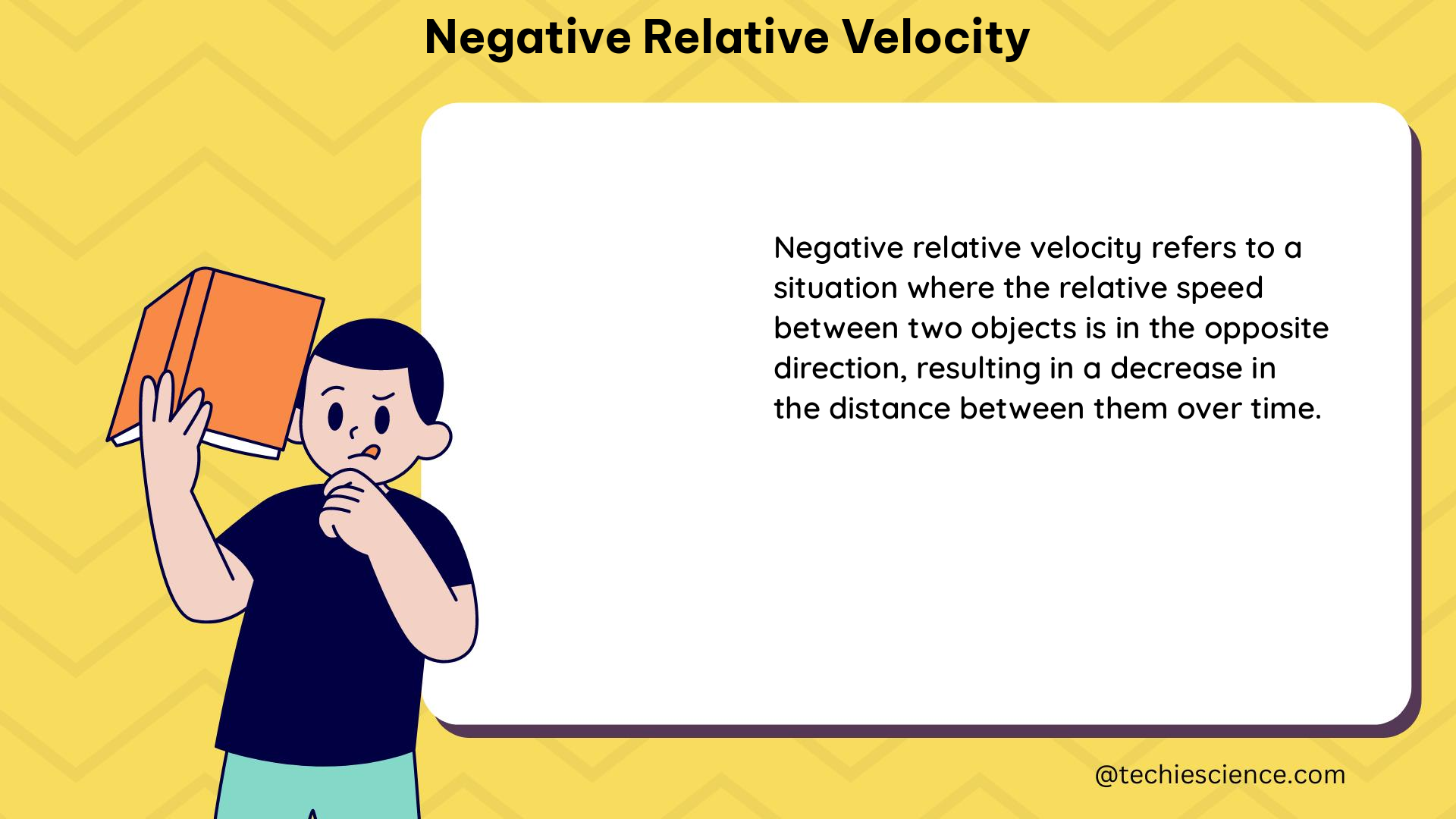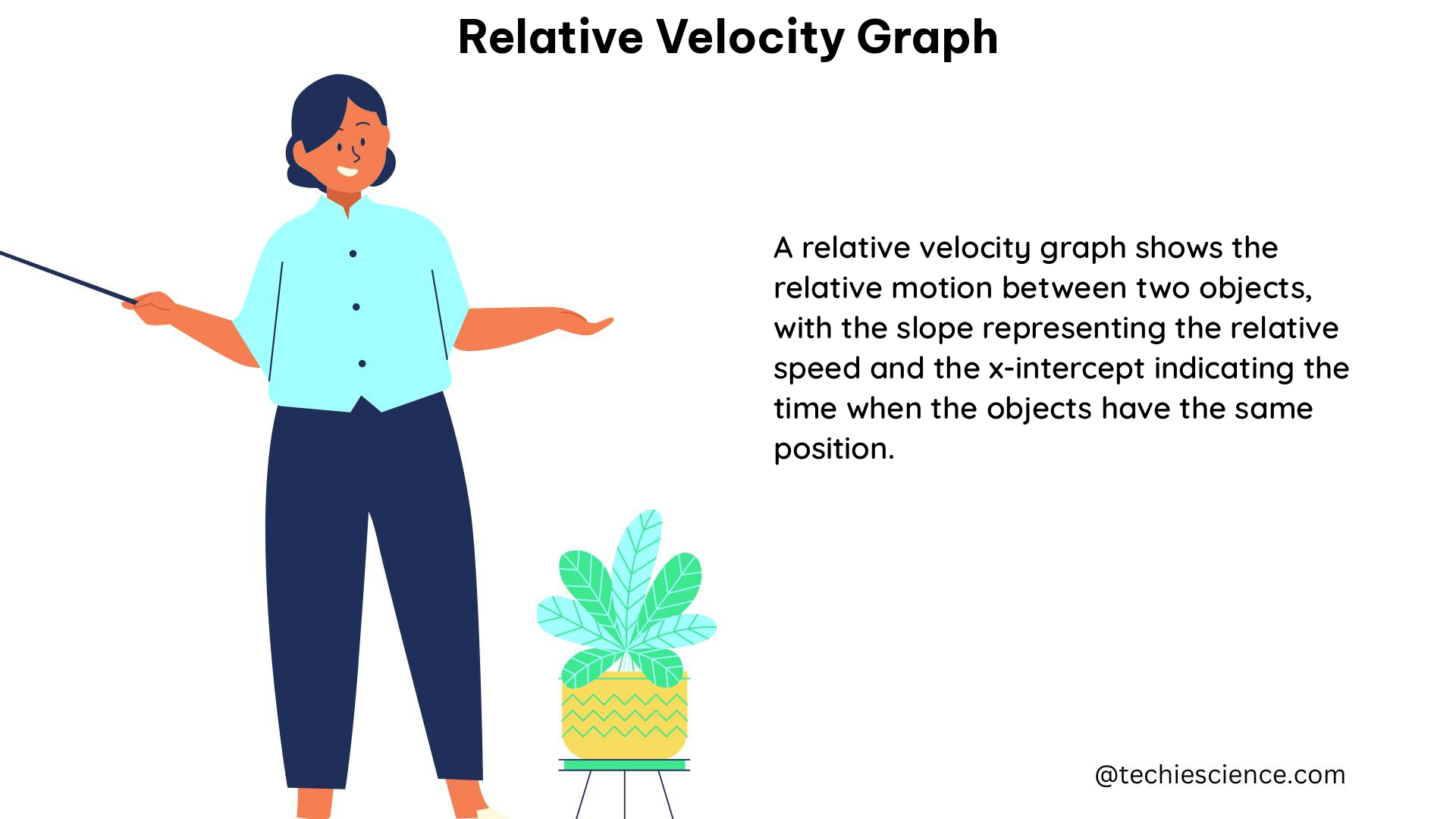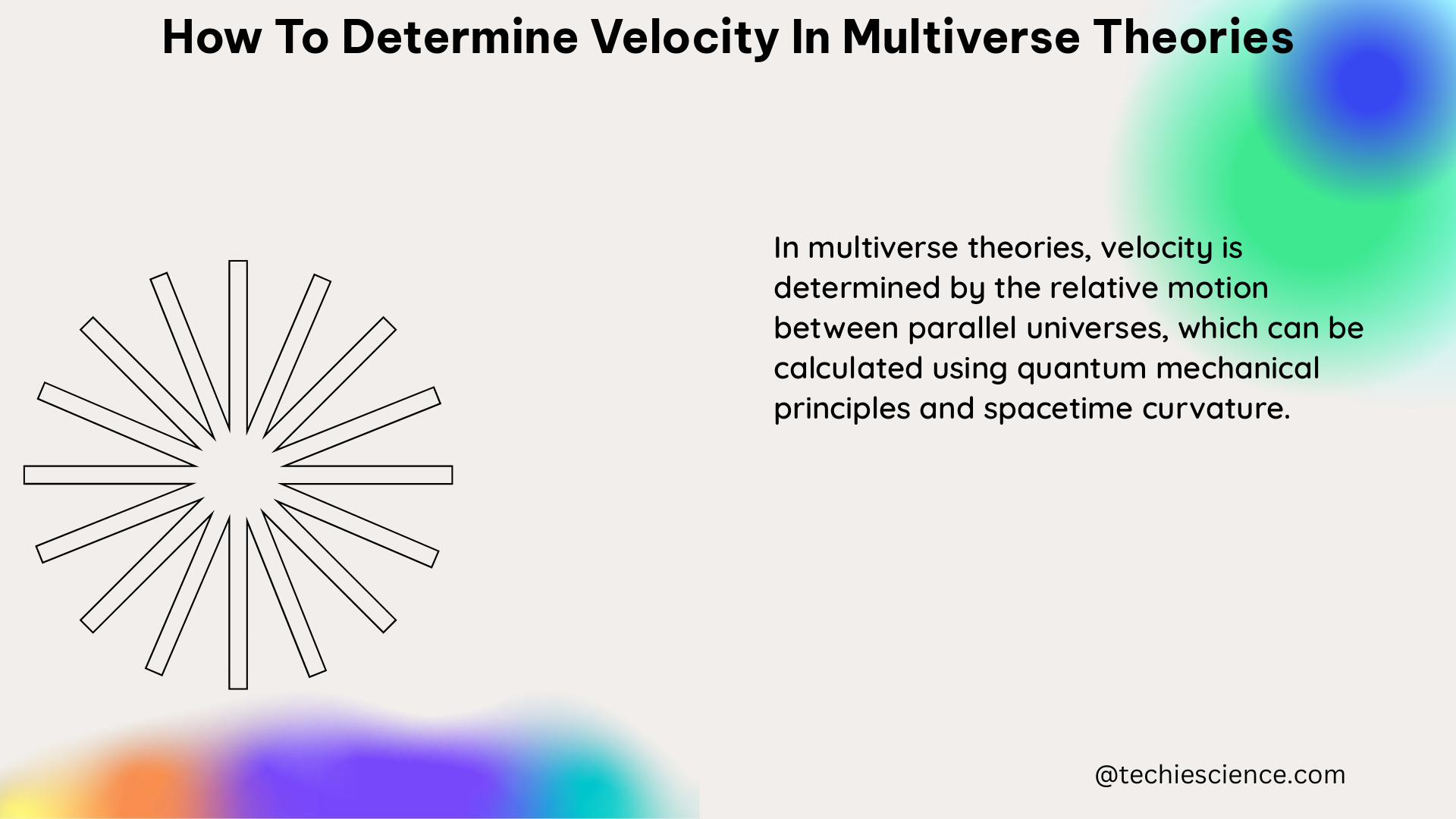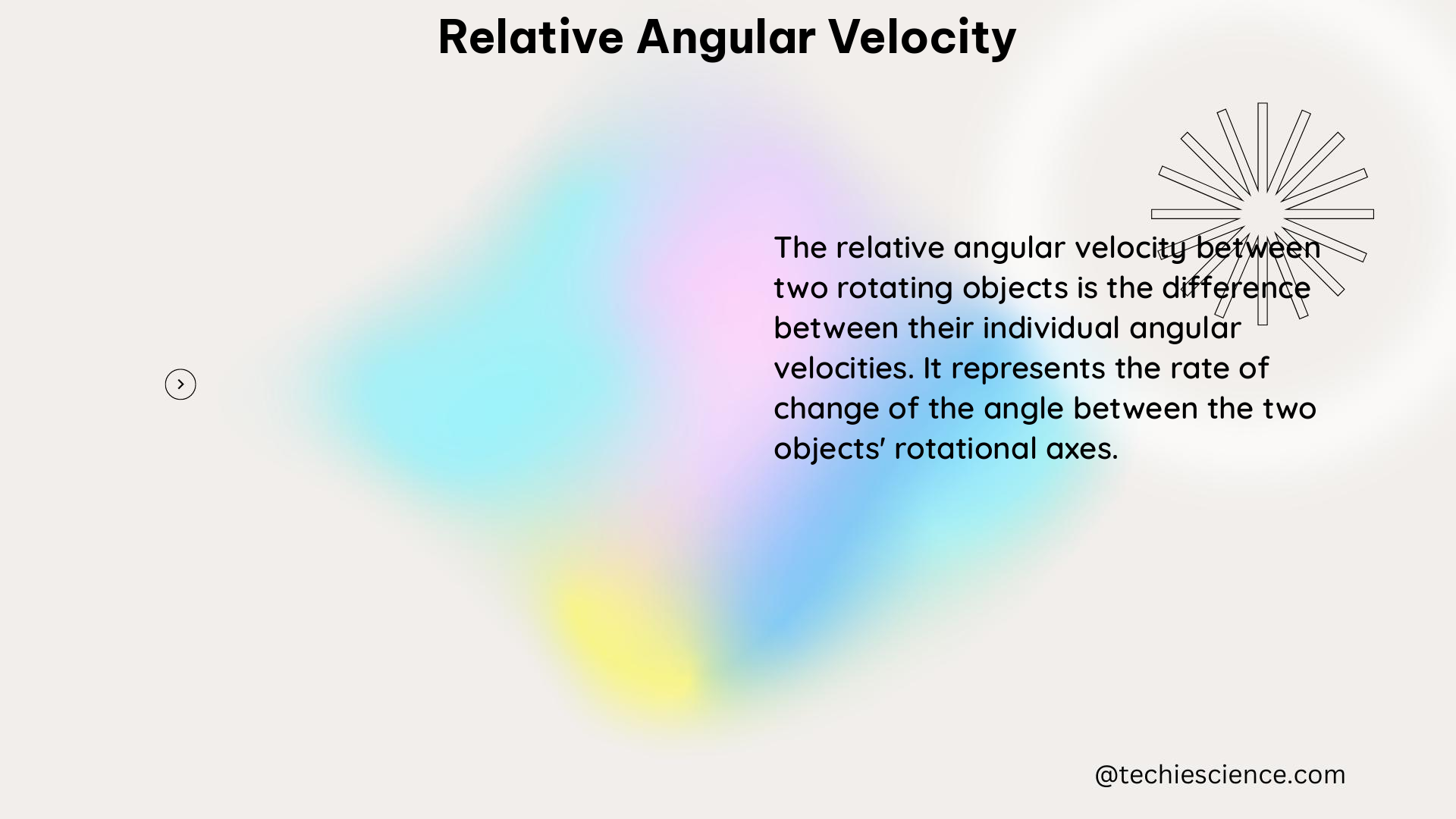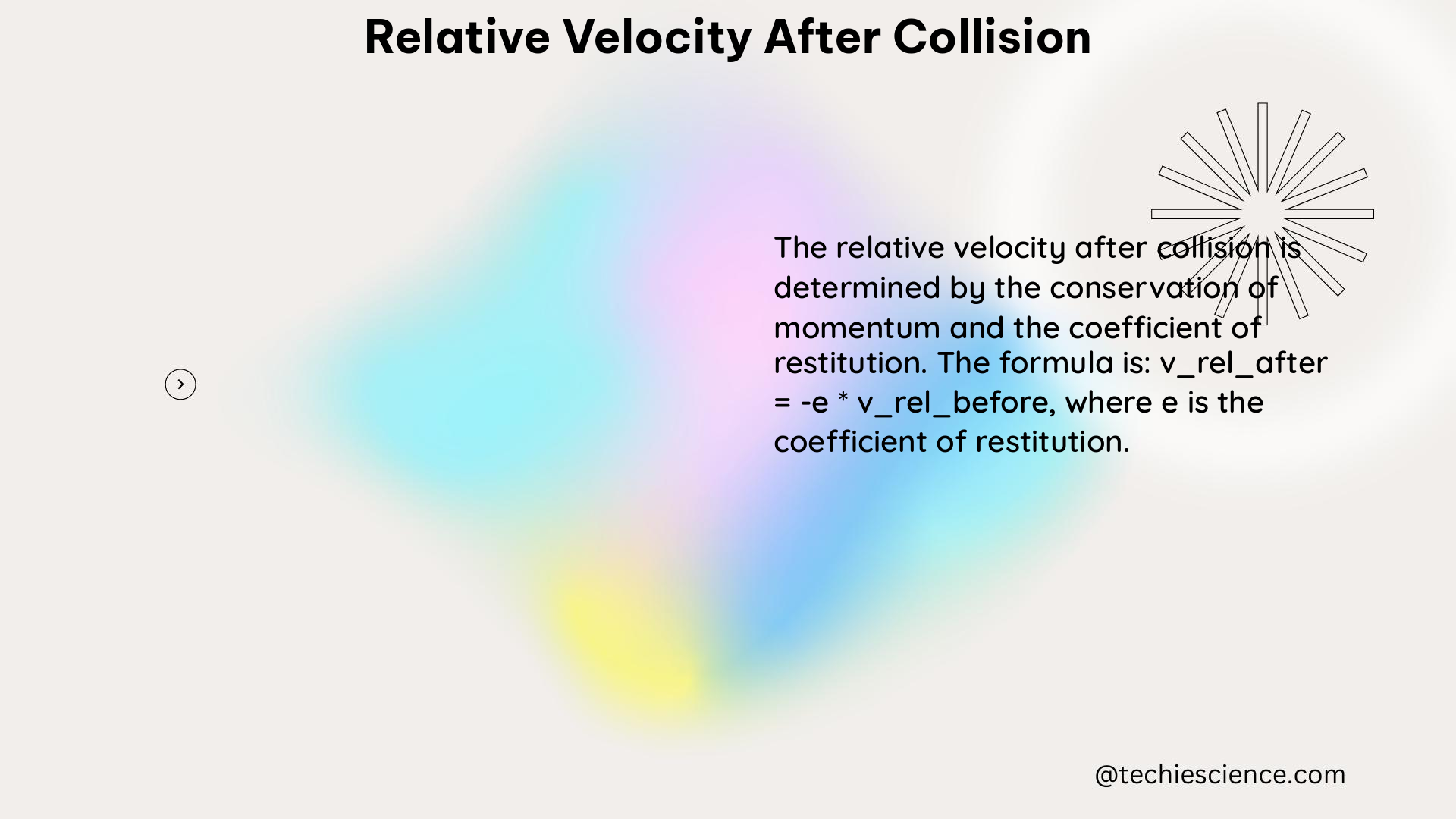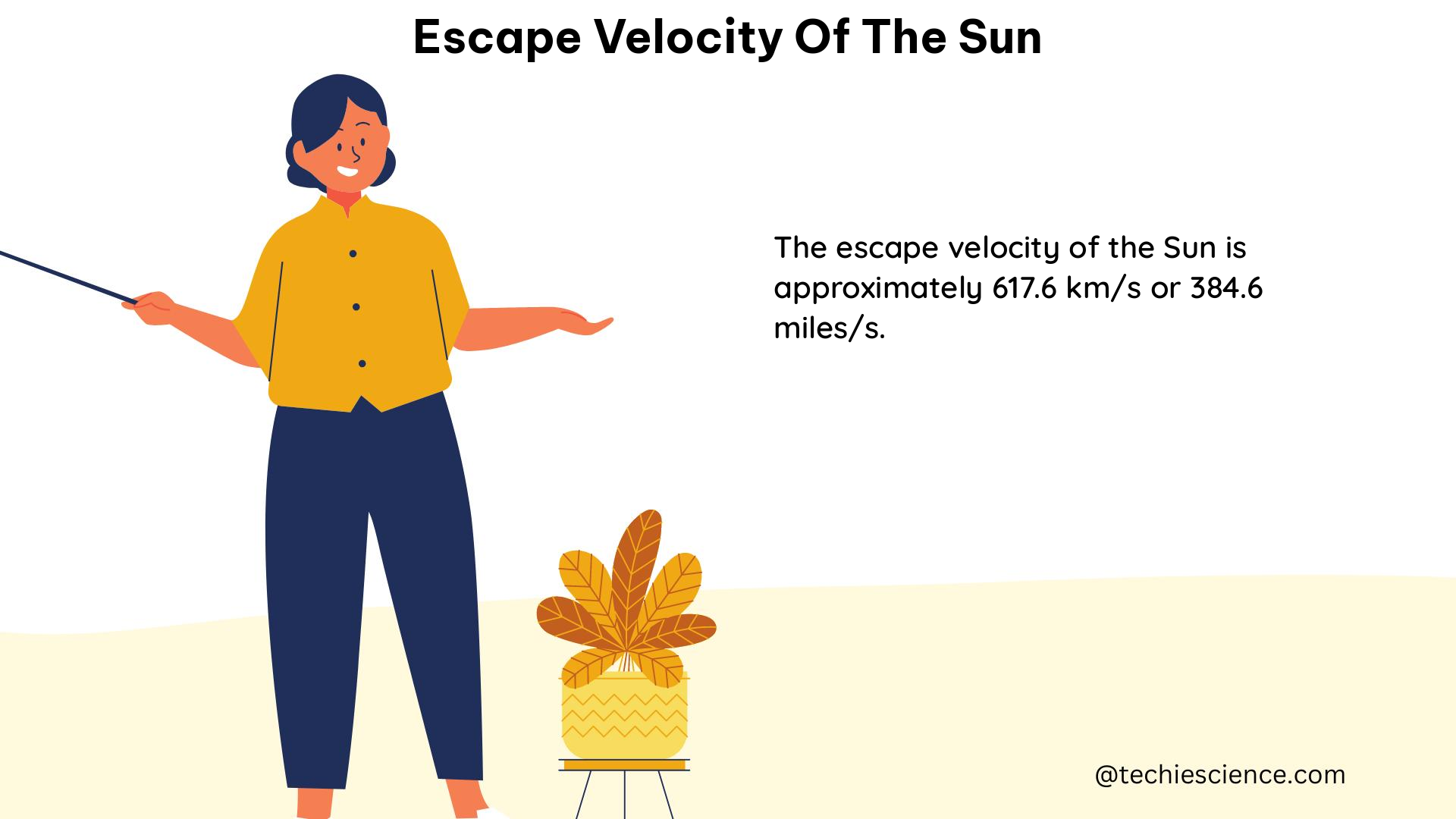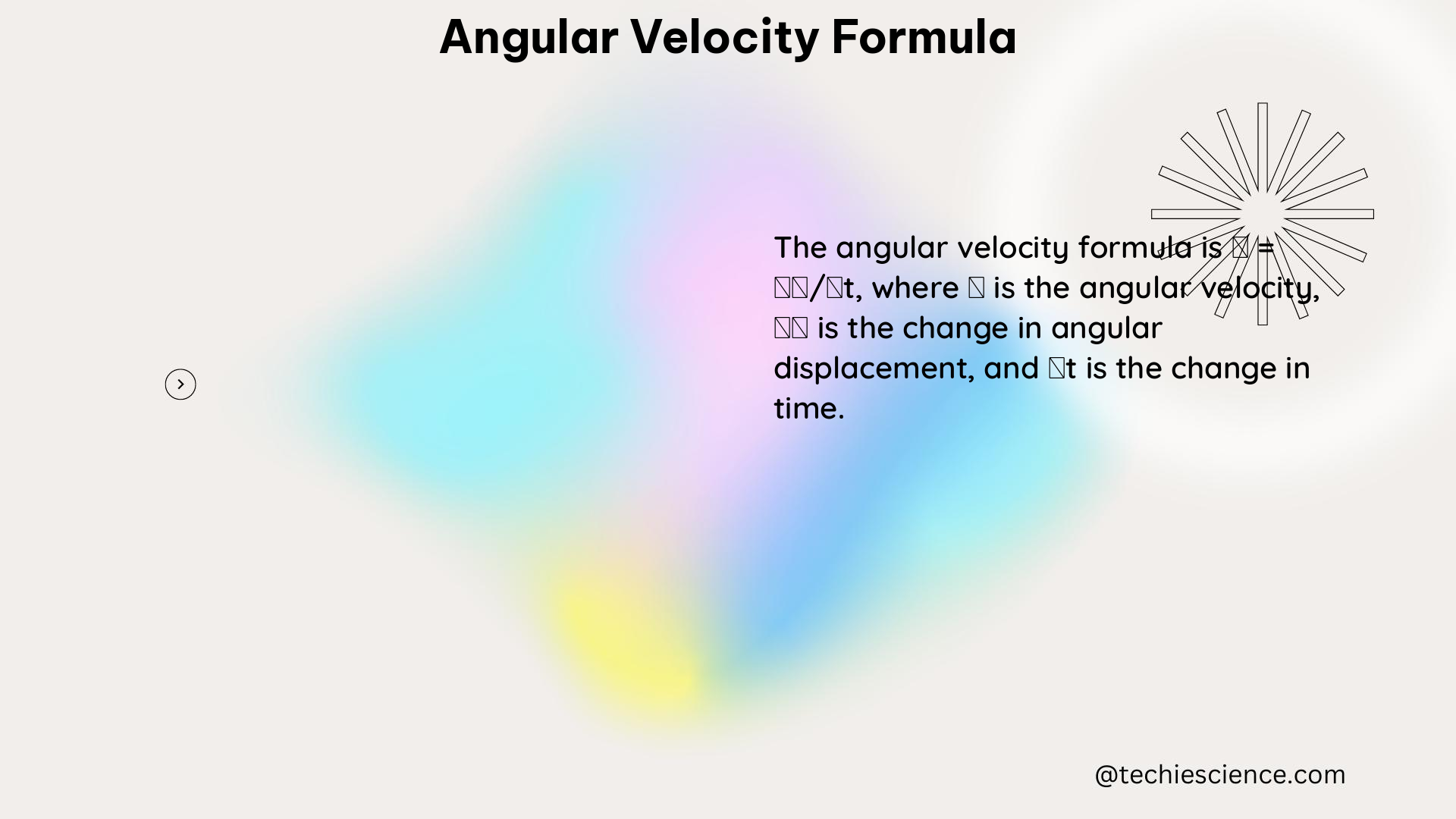Relative velocity is a fundamental concept in physics that describes the velocity of one object with respect to another object. When two objects move in the same direction, the relative velocity is given by the difference in their velocities. This guide will provide you with a comprehensive understanding of this topic, including the underlying principles, mathematical formulas, practical examples, and real-world applications.
Understanding the Concept of Relative Velocity
Relative velocity is the velocity of one object with respect to another object. When two objects are moving in the same direction, the relative velocity can be calculated using the following formula:
Relative velocity (Vab) = Velocity of object A (Va) – Velocity of object B (Vb)
The direction of the relative velocity is determined by the direction of the difference between the velocities of the two objects. If the velocity of object A is greater than the velocity of object B, then the relative velocity is in the same direction as the velocity of object A. If the velocity of object B is greater than the velocity of object A, then the relative velocity is in the opposite direction of the velocity of object A.
Theorem: Relative Velocity in the Same Direction
The theorem for relative velocity in the same direction can be stated as follows:
Theorem: When two objects are moving in the same direction, the relative velocity of object A with respect to object B is equal to the difference between the velocity of object A and the velocity of object B.
Mathematically, this can be expressed as:
Vab = Va – Vb
where:
– Vab is the relative velocity of object A with respect to object B
– Va is the velocity of object A
– Vb is the velocity of object B
Example: Relative Velocity of Cars on a Straight Road
Consider two cars, Car A and Car B, moving in the same direction on a straight road. Let’s assume the following velocities:
- Car A’s velocity (Va) = 60 mph
- Car B’s velocity (Vb) = 50 mph
Using the relative velocity formula, we can calculate the relative velocity of Car A with respect to Car B:
Vab = Va – Vb
Vab = 60 mph – 50 mph
Vab = 10 mph
In this case, the relative velocity of Car A with respect to Car B is 10 mph in the same direction as Car A.
Now, let’s consider a different scenario where Car B’s velocity is greater than Car A’s velocity:
- Car A’s velocity (Va) = 60 mph
- Car B’s velocity (Vb) = 70 mph
Applying the relative velocity formula:
Vab = Va – Vb
Vab = 60 mph – 70 mph
Vab = -10 mph
In this case, the relative velocity of Car A with respect to Car B is -10 mph, which means it is in the opposite direction of Car A’s velocity.
Physics Formulas and Equations
The relative velocity in the same direction can be expressed using the following physics formulas and equations:
-
Relative Velocity Formula:
Vab = Va – Vb -
Displacement Formula:
Δs = Vab × Δt
where:
– Vab is the relative velocity of object A with respect to object B
– Va is the velocity of object A
– Vb is the velocity of object B
– Δs is the displacement of object A relative to object B
– Δt is the time interval
These formulas and equations are essential for understanding and applying the concept of relative velocity in the same direction.
Physics Numerical Problems
- Problem: Two cars, Car A and Car B, are moving in the same direction on a straight road. Car A has a velocity of 80 km/h, and Car B has a velocity of 60 km/h. Calculate the relative velocity of Car A with respect to Car B.
Solution:
Given:
– Velocity of Car A (Va) = 80 km/h
– Velocity of Car B (Vb) = 60 km/h
Using the relative velocity formula:
Vab = Va – Vb
Vab = 80 km/h – 60 km/h
Vab = 20 km/h
Therefore, the relative velocity of Car A with respect to Car B is 20 km/h in the same direction as Car A.
- Problem: A train is moving at a velocity of 120 km/h, and a car is moving in the same direction at a velocity of 90 km/h. Calculate the relative velocity of the train with respect to the car.
Solution:
Given:
– Velocity of the train (Va) = 120 km/h
– Velocity of the car (Vb) = 90 km/h
Using the relative velocity formula:
Vab = Va – Vb
Vab = 120 km/h – 90 km/h
Vab = 30 km/h
Therefore, the relative velocity of the train with respect to the car is 30 km/h in the same direction as the train.
These numerical problems demonstrate the application of the relative velocity formula in the same direction and provide a deeper understanding of the concept.
Practical Applications of Relative Velocity in the Same Direction
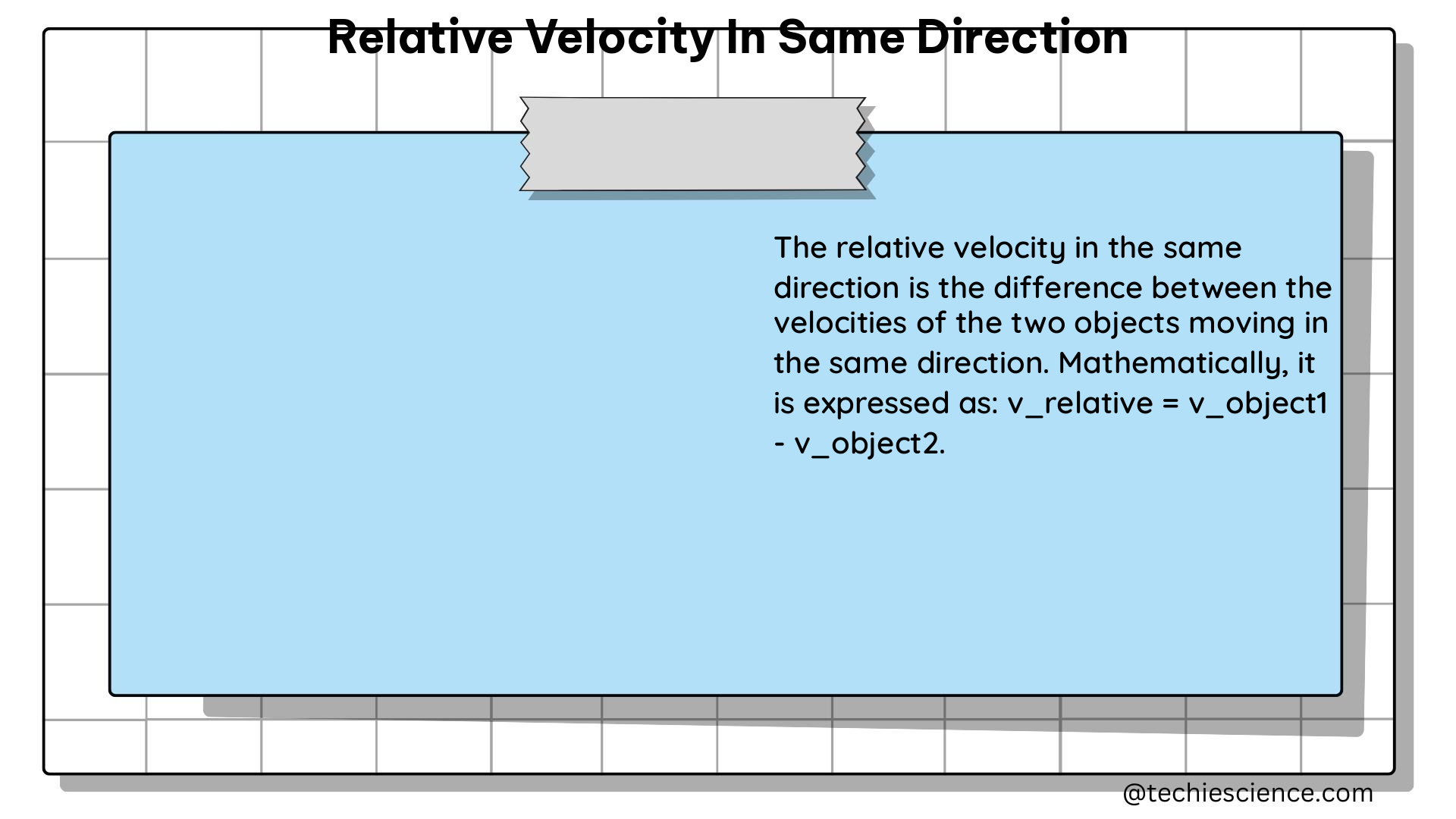
Relative velocity in the same direction has numerous practical applications in various fields, including transportation, space travel, and navigation.
Transportation
In transportation, directional velocity measurements are essential for ensuring safe and timely travel. Pilots and navigators use velocity measurements to determine the speed and direction of their aircraft or ship relative to the ground or the water. This information is crucial for determining the correct flight or navigation path and ensuring that the aircraft or ship reaches its destination on time.
For example, consider a commercial airliner flying at an altitude of 30,000 feet with a ground speed of 500 mph. If there is a strong tailwind blowing at 50 mph in the same direction as the aircraft, the relative velocity of the aircraft with respect to the ground would be 550 mph (500 mph + 50 mph). Knowing this relative velocity is essential for the pilot to accurately calculate the aircraft’s position, fuel consumption, and arrival time.
Space Travel
In space travel, the concept of relative velocity is also crucial for determining the trajectory of spacecraft, planets, and stars. By understanding the relative velocity of these objects, scientists can predict their movement and plan space missions accordingly.
For instance, when a spacecraft is launched into space, its velocity is measured relative to the Earth’s surface. As the spacecraft travels through space, its velocity is constantly changing due to the gravitational pull of other celestial bodies. By calculating the relative velocity of the spacecraft with respect to these bodies, scientists can accurately predict the spacecraft’s trajectory and make necessary adjustments to ensure a successful mission.
Navigation
Relative velocity measurements are also essential for navigation, both on land and at sea. Navigators use velocity measurements to determine the speed and direction of their vehicles relative to their surroundings, which is crucial for planning the most efficient and safe routes.
For example, in marine navigation, the relative velocity of a ship with respect to the water is used to calculate the ship’s speed over ground (SOG) and course over ground (COG). This information is essential for navigating through waterways, avoiding obstacles, and reaching the desired destination.
Conclusion
Relative velocity in the same direction is a fundamental concept in physics with numerous practical applications. By understanding the underlying principles, mathematical formulas, and real-world examples, you can develop a comprehensive understanding of this topic and apply it in various fields, such as transportation, space travel, and navigation.
Remember, the key to mastering relative velocity in the same direction is to practice solving numerical problems, understanding the physics formulas and equations, and applying the concept to real-world scenarios. With this knowledge, you’ll be well-equipped to tackle any challenges related to relative velocity in the same direction.
References
- FasterCapital. Relative Velocity – FasterCapital. https://fastercapital.com/keyword/relative-velocity.html
- Physics Stack Exchange. Doubt in negative sign of relative velocities of two objects in same directions. https://physics.stackexchange.com/questions/791019/doubt-in-negative-sign-of-relative-velocities-of-two-objects-in-same-directions
- GeeksforGeeks. Relative Velocity Formula. https://www.geeksforgeeks.org/relative-velocity-formula/
- OpenStax. 2.1 Relative Motion, Distance, and Displacement. https://openstax.org/books/physics/pages/2-1-relative-motion-distance-and-displacement
- YouTube. Relative Velocity of a body moving in the same direction … – YouTube. https://www.youtube.com/watch?v=AFgNpH5RFjE






